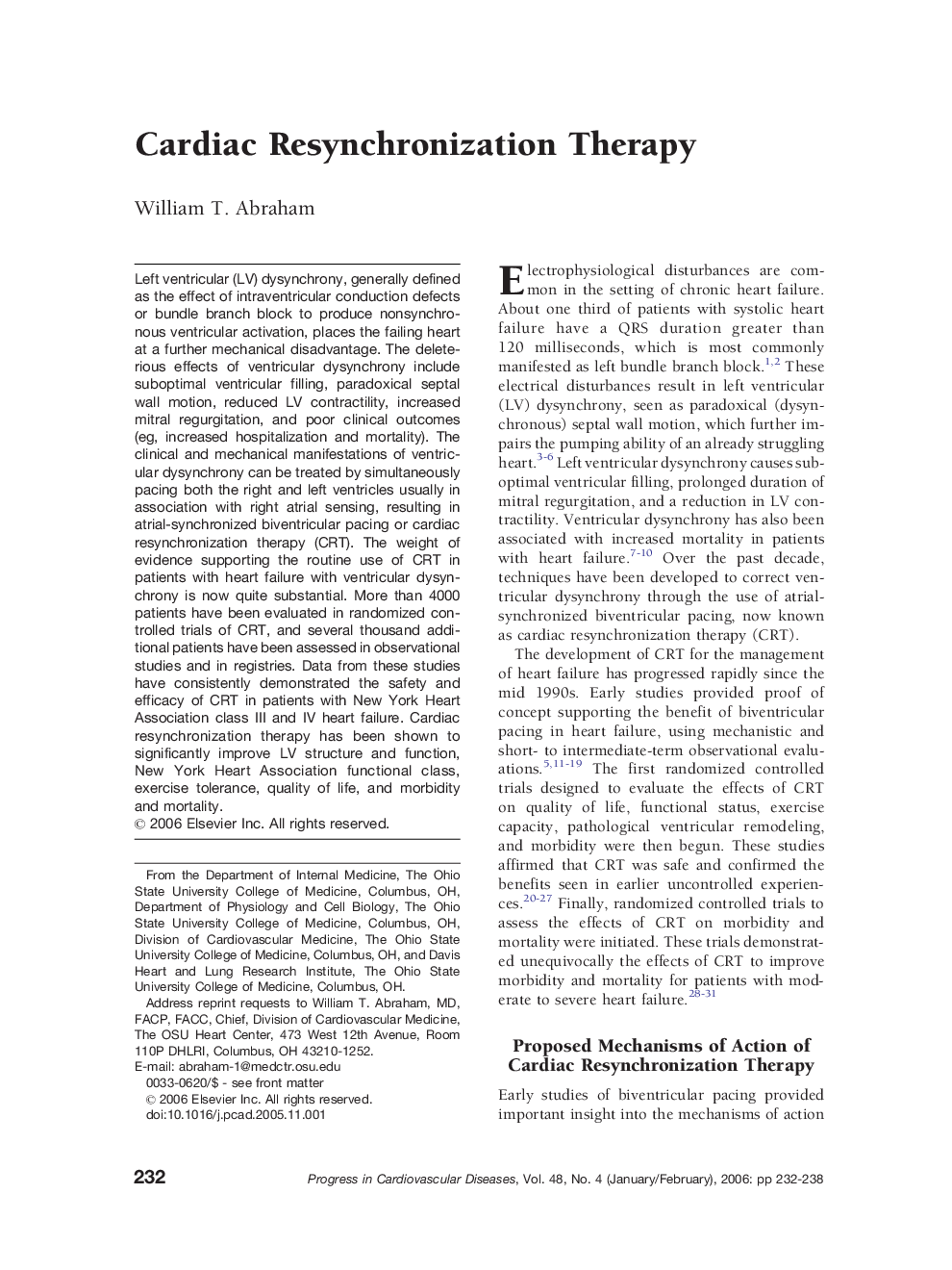| Article ID | Journal | Published Year | Pages | File Type |
|---|---|---|---|---|
| 3007024 | Progress in Cardiovascular Diseases | 2006 | 7 Pages |
Left ventricular (LV) dysynchrony, generally defined as the effect of intraventricular conduction defects or bundle branch block to produce nonsynchronous ventricular activation, places the failing heart at a further mechanical disadvantage. The deleterious effects of ventricular dysynchrony include suboptimal ventricular filling, paradoxical septal wall motion, reduced LV contractility, increased mitral regurgitation, and poor clinical outcomes (eg, increased hospitalization and mortality). The clinical and mechanical manifestations of ventricular dysynchrony can be treated by simultaneously pacing both the right and left ventricles usually in association with right atrial sensing, resulting in atrial-synchronized biventricular pacing or cardiac resynchronization therapy (CRT). The weight of evidence supporting the routine use of CRT in patients with heart failure with ventricular dysynchrony is now quite substantial. More than 4000 patients have been evaluated in randomized controlled trials of CRT, and several thousand additional patients have been assessed in observational studies and in registries. Data from these studies have consistently demonstrated the safety and efficacy of CRT in patients with New York Heart Association class III and IV heart failure. Cardiac resynchronization therapy has been shown to significantly improve LV structure and function, New York Heart Association functional class, exercise tolerance, quality of life, and morbidity and mortality.
